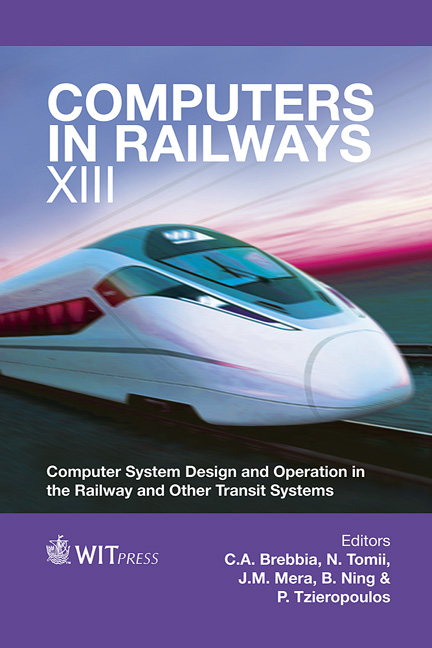Technological Innovation Using A Test Car For Conventional Lines
Price
Free (open access)
Transaction
Volume
127
Pages
8
Page Range
159 - 166
Published
2012
Size
3,388 kb
Paper DOI
10.2495/CR120141
Copyright
WIT Press
Author(s)
K. Katano, M. Matsuhashi, Y. Kouno & K. Anzai
Abstract
In order to carry out test runs efficiently, an experimental train which was named MUE-Train was developed. JR East remodeled a series 209 EMU into MUETrain. The concepts of the modification were that the structure could be equipped with verification target devices and that MUE-Train could run on various conventional lines for matching test conditions of each device. A variety of devices and systems have been installed on MUE-Train, and test runs have been carried out. A major one of them is a train communication network which is named INTEROS developed with the purpose of improving reliability and service. INTEROS is based on 100Mbps Ethernet transmission technologies. Another one is a ground equipment monitoring system. The system consists of devices which monitor status of items on the ground such as tracks, overhead wires and so on. The system has been developed to reduce maintenance costs, as well as to improve precision of measurement and inspection. The system aims to be installed on a commercial car and to collect ground equipment data at high frequency on the car by using INTEROS in the near future. This paper describes the overview of MUE-Train’s configuration and its test runs. Keywords: test car, experimental train, air spring car-body tilting system, monitoring system, train communication network.
Keywords
test car, experimental train, air spring car-body tilting system, monitoring system, train communication network





